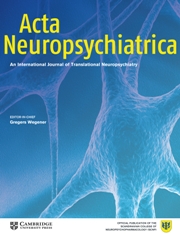
“The mainstay treatment for schizophrenia is antipsychotic drugs (APDs), which are mostly effective against the positive symptoms (e.g. hallucinations), but provide minimal benefits for the negative symptoms (e.g. social withdrawal) and cognitive deficits.
We have recently shown that treatment with the non-intoxicating phytocannabinoid, cannabidiol (CBD), can improve cognition and social interaction deficits in a maternal immune activation (MIA) model relevant to the aetiology of schizophrenia, however, the mechanisms underlying this effect are unknown.
An imbalance in the main excitatory (glutamate) and inhibitory (GABA) neurotransmitter systems in the brain plays a role in the pathophysiology of schizophrenia. Therefore, the endocannabinoid system could represent a therapeutic target for schizophrenia as a regulator of glutamate and GABA release via the CB1 receptor (CB1R).
Overall, these findings show that CBD can restore cannabinoid/GABAergic signalling deficits in regions of the brain implicated in schizophrenia pathophysiology following maternal poly I:C exposure. These findings provide novel evidence for the potential mechanisms underlying the therapeutic effects of CBD treatment in the poly I:C model.”
https://www.ncbi.nlm.nih.gov/pubmed/31202911
https://www.sciencedirect.com/science/article/pii/S027858461930106X?via%3Dihub

 “The endocannabinoid system (ECS) is an extensive endogenous signaling system with multiple elements, the number of which may be increasing as scientists continue to elucidate its role in human health and disease. The ECS is seemingly ubiquitous in animal species and is modulated by diet, sleep, exercise, stress, and a multitude of other factors, including exposure to phytocannabinoids, like
“The endocannabinoid system (ECS) is an extensive endogenous signaling system with multiple elements, the number of which may be increasing as scientists continue to elucidate its role in human health and disease. The ECS is seemingly ubiquitous in animal species and is modulated by diet, sleep, exercise, stress, and a multitude of other factors, including exposure to phytocannabinoids, like  “Bipolar disorder (BD) is a debilitating, lifelong neuropsychiatric illness characterised by unsteady mood states which vacillate from (hypo)mania to depression. Despite the availability of pharmaceutical agents which can be effective in ameliorating the acute affective symptoms and prevent episodic relapse, BD is inadequately treated in a subset of patients.
“Bipolar disorder (BD) is a debilitating, lifelong neuropsychiatric illness characterised by unsteady mood states which vacillate from (hypo)mania to depression. Despite the availability of pharmaceutical agents which can be effective in ameliorating the acute affective symptoms and prevent episodic relapse, BD is inadequately treated in a subset of patients.


 “Despite the staggering consequences of the opioid epidemic, limited nonopioid medication options have been developed to treat this medical and public health crisis.
“Despite the staggering consequences of the opioid epidemic, limited nonopioid medication options have been developed to treat this medical and public health crisis.